


Distance from hotel: 10,7Km/16mins driving
Ancient Korinthos was one of the most important city-states of ancient Greece. Today in the archaeological site, one can visit the Temple of Apollo; its seven remaining Doric columns stand in a prominent position overlooking the ancient Agora. The temple was built in 530 BC, consisting of 2 rooms, and originally had 15 Doric-order columns along its length and 6 along its width. The city market had a rectangular shape, housing a number of similarly laid-out stores, each divided into 2 rooms. Its front was consisted by a double row of columns, the outer Doric and inner Ionic. In the ancient Agora, one can also visit the shops where the Apostle Paul once stood, along with the ancient Council. Descending the steps of the ‘propylaia’ (front gates) will lead you to Lecheou street where you will encounter the Pirene Fountain, with its six cavelike chambers, and the Glauki fountain standing carved in the rock. In the archaeological site you will also have the chance to visit the Odeon, built in the 1st century AD; and the 18,000-seat theater built in the fifth century BC, and later converted by the Romans into an arena for animal fights. Finally, you can walk through the remnants of the gymnasium and Temple of Asclepius near the Lerna fountain. Above Ancient Korinthos lies the Castle of Akrocorinthos, the Acropolis of the ancient city, which is itself worth a visit. The Archaeological Museum of Ancient Korinthos contains in its collections findings from prehistoric times; the Geometric, Archaic, Classical and Hellenistic eras, as well as materials from the Roman and Byzantine periods. Its exhibits include the findings of the temple of Asclepius. The atrium of the museum is adorned with sculptures and inscriptions.
Opening hours: Daily 8:00-15:00 – Copyright © wondergreece.gr
Distance from hotel: 13,7Km/21mins driving
Atop the steep cliff of Akrocorinthos stands the Acropolis, the ancient fortress of Korinthos with the ancient settlement stretching down to its foothills. It is surrounded by stone walls that follow the line of the rock, built in three successive layers of fortifications. A paved path leads to the three gates of the castle. The first gate is arched, with a Byzantine marble slab; the second is a two-storey castellated gate. An exterior staircase leads to a subterranean vaulted space. The third gate has a horseshoe-shaped arch and two towers to the right and left. Inside the castle there are several ruins of buildings, including temples, fountains, pools with pillars brick arches, the fountain of Upper Peirene, the temple of Aphrodite at the highest point of the Acrokorinthos and a two-storey tower serving as a lookout, with windows and loopholes, and the lower floor functioning as a reservoir. From the top of Acrokorinthos, the view extends to the mountains Kithaironas (across the gulf in Central Greece), Ziria and Panachaiko, of course the Korinthiakos and the Saronic Gulf.
Opening hours: Daily 8:00-15:00. – Copyright © wondergreece.gr
Distance from hotel: 47,9Km/54mins driving
Lake Stymphalia is located in the north-eastern part of the Peloponnese, in Corinthia, southern Greece. It is a closed karst basin with a wetland area and an agrarian area. The lake is an important stopover for migratory birds. The size of the lake varies, depending on the season. Usually this area around the lake is fairly dryerfoot. In certain weather conditions thousands of small green frogs hide in the damp grass from the aquatic snakes. These frogs are invisible in the grass until you almost step on them, at which they jump out of the way, usually landing on another frog which also jumps. The effect is of ripples of frogs travelling outwards with every step. The area is rich in birds, amphibians and plant life. Other wildlife, such as weasels, can also be seen.The area is also mentioned in Greek Mythology, due to the Stymphalian birds, which infested the Arcadian woods near the lake. Heracles` sixth labour was to exterminate them.

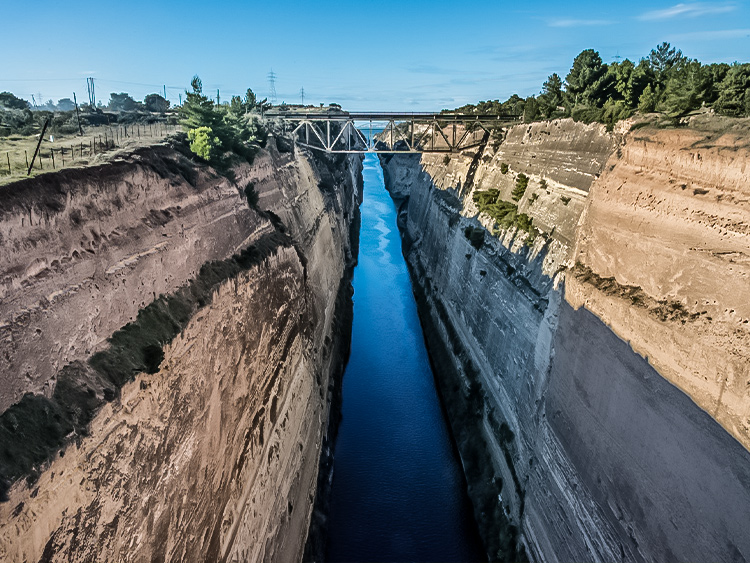

Distance from hotel: 94,3Km/85mins driving
Kalavryta a town and a municipality in the mountainous east-central part of the regional unit of Achaea, Greece. The town is located on the right bank of the river Vouraikos.Notable mountains in the municipality are Mount Erymanthos in the west and Aroania or Chelmos in the southeast. Kalavryta is the southern terminus of the Diakopto-Kalavryta rack railway, built by Italian engineers between 1885 and 1895. Kalavryta is built near the ancient city of Cynaetha. Kalavrita was one of the areas in Greece that experienced the hardest Nazi German copies during the Occupation. On December 13, 1943, the German occupation army executed almost the entire male population (most over the age of 12) of Kalavrita and burned the city completely.
Distance from hotel: 22,5Km/27mins driving
The Corinth Canal connects the Gulf of Corinth in the Ionian Sea with the Saronic Gulf in the Aegean Sea. It cuts through the narrow Isthmus of Corinth and separates the Peloponnese from the Greek mainland, arguably making the peninsula an island. The canal was dug through the isthmus at sea level and has no locks. It is 6.4 kilometres (4 mi) in length and only 21.4 metres (70 ft) wide at its base, making it impassable for many modern ships. It has little economic importance and is mainly a tourist attraction. The canal was initially proposed in classical times and a failed effort was made to build it in the 1st century AD. Construction recommenced in 1881 but was hampered by geological and financial problems that bankrupted the original builders. It was completed in 1893, but, due to the canal’s narrowness, navigational problems, and periodic closures to repair landslides from its steep walls, it failed to attract the level of traffic expected by its operators.
Distance from hotel: 17,2Km/24mins driving
The inventive Corinthians realized from a very early age – perhaps from the 9th century BC – that the importance of the Isthmus, beyond a defensive line, was very important for navigation and in particular that the small width of the Isthmus could allow ships to pass through. one sea to another (from the Corinthian Gulf to the Saronic Gulf and vice versa) and to facilitate East-West communication, eliminating the dangerous and extremely distant route of the Peloponnese and the Cape of Malea.In this context, with the well-known ingenuity, diligence, intelligence and knowledge of engineering, they began to build a corridor across the Isthmus that started from the current area of Poseidonia and ended at Schiounountas (today’s Kalamaki), without following a straight path. to avoid large uphills and downhills that would strain the executors of the ship’s tow. This treadmill was named Diolkos and was the world’s first fixed-track vehicle.As can be seen from the excavations carried out by the famous archaeologist Nikos Verdelis (which were essentially stopped), from 1956 to 1962, Diolkos took the form that exists to this day from Periandros, who built it with large, stone, stone slabs, which had two grooves in the middle, which were about 1.50 m apart. and aimed to make the “tugs” (of the vehicles where the ships were loaded) safer and faster.Diolkos remained in operation for 1600 years and until 1154.
Copyright © VisitCorinth.gr
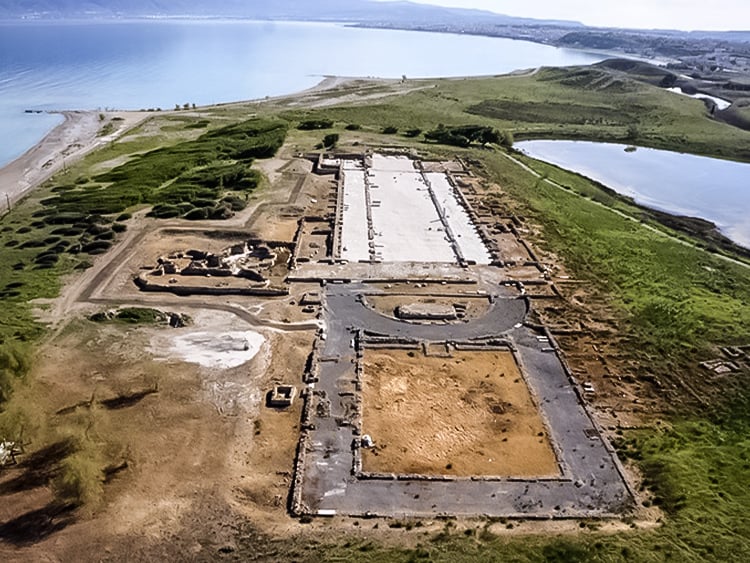


Distance from hotel: 9,7Km/12mins driving
The port of Lechaeum was the main port – port of Ancient Corinth, a marvel of know-how and technology, copied by the Carthaginians first and then the Romans. It is named after Lehi, son of Pyrenees and Poseidon. It is located in the Gulf of Corinth and was connected to the city of Corinth with long walls, with a total length of 2,300m. Between the walls, there was the famous street of Lechaios. The port, which had two divisions, the merchant and the naval base, was entirely artificial. It had three internal ports and three external ports. The rubble from the excavations was piled up on two hills to secure the internal ports from the strong north winds, which still exist.
Lechaio port, the inland ports
Stone piers, piers, breakwaters, ramps, a total length of 7km were built along the ports, as well as a large number of warehouses and other port facilities for the thousands of tons of goods to and from the colonies of Corinth and the SW, a huge number of shipyards. triremes are built on behalf of other city-states, creating the first naval warfare industry, which resembles today’s. The capacity of these shipyards was undoubtedly remarkable, since in 334 BC. Corinth can contribute to the fleet of Alexander the Great 160 fully equipped triremes, when the corresponding Athenian contribution is only 20! In the wider area of the port, there was the Villa of Periandros, where the Symposium of the Seven Wise Men of Greece is located, and a beautiful temple of Aphrodite and Olympian Zeus. The port of Lechaio was used continuously from the 7th century BC until 1955, ie for 2655 years!
Copyright © VisitCorinth.gr
Distance from hotel: 26Km/22mins driving
Port of Kechries is a natural bay, it was once the Saronic Gulf port of Korinthia. There are still two ruined piers, one opposite the other, and between them, ornate buildings submerged in the sea after a devastating earthquake. At the bottom were also found uniquely beautiful paintings and glass/ivory opera sectile, dating from the 4th century AD, which can now be seen in the Archaeological Museum of Isthmia.
Copyright © wondergreece.grg
Distance from hotel: 21Km/25,7mins driving
The Archaeological Museum of Isthmia opened in 1978 and presents in its collections findings from the temple of Poseidon, the sanctuary of Palaemon, the Hellenistic settlement of Rahi, and the impressive opus sectile panels, unique in Greece, made of ivory and glass, found in excavations of the Ancient port of Kechries. Throughout ancient times the city hosted the Isthmian sport games held in honor of Palaemon. Opening hours: Daily except Mondays 8:30-15:00
Copyright © wondergreece.gr



Distance from hotel: 10,2Km/16mins driving
Ancient Sicyon, located near the modern-day village of Sikyona, was a center of arts in Ancient Greece, just as Athens was a center of philosophy. Youngsters gathered in order to study sculpture and painting, influencing the current trends in art. Today one can visit one of the most impressive theaters of its size, built in the 4th century BC. With a 20m diameter orchestra (stage) and 125m cavea (seating area), split in two with a frieze, 16 radial stairways, and 15 rows. the front-row seats surrounding the orchestra belonged to the officials. The top tier has lanes with gates similar to those of the Asklepios theater in Epidaurus, and 2 vaulted passages. The stage, consisting of the orchestra and the proscenium, was full of sculptures and architectural elements. The venue was used both for theatrical performances and political gatherings. Cultural events still take place up to today. The early excavations uncovered traces of the Council; a square building with 4 rows of columns, and Roman baths, while during more recent excavations the Gymnasium was revealed. At the archaeological site one can also see the 7th century. B.C. temple dedicated either to the goddess Artemis or her brother Apollo.
Copyright © wondergreece.gr
Distance from hotel: 24,3Km/33mins driving
Between Chiliomodi and Klenia, lies the important city of Tenea. According to Pausanias, its first inhabitants were Trojans, who had been captured by the Greeks in Tenedos and were transferred there as prisoners. King Agamemnon allowed them to build houses. Poet Virgil claims that Tenea and Rome were both made by Trojans. Also, according to the legend, it is the place where Polyvos raised Oedipus. The first important finding in the area, is Apollo (Kouros) of Tenea. The famous statue of the 6th BC. century, which was excavated in 1854. In 2010 two more statues were found in discovered cemetery, which crosses the ancient roads. Its creation is estimated around the 6th, 5th and 4th century BC. The two statues are now on display at the Archaeological Museum of Ancient Corinth. Following am extensinve and well planed excavation that started in 2013, led by Dr. Korka, an organized cemetery dating from the 6th century was found, around the 1984 burial. In 2018, remains from the residential area of the city were discovered for the first time. In an area of 672 sq.m. areas with port openings were excavated. They were organized around inner courtyards. The archeological dig also located a unique two-room burial monument, situated above-ground, which dates back to the 1st century AD., while the period of its use goes back to the 4th c. A.D. This wonderful archeological discovery is among the main historical and archaeological events of 2018 according to the History network website. Apart from the findings, an additional fact that makes this excavation special, is the relationships that have developed between the local community and the members of the research team, which led to the creation of the association “Friends of Ancient Tenea”. A club that has played a catalytic role in the success of the whole program. You can visit the archeological site of the ancient quarry, in the village of Agios Vassilios. Archaeologists estimate thate the use of the quarry took place between the 5th and the 3rd century BC, while near the village you will find the remains of the Hadrian’s Aqueduct.
Copyright © VisitCorinth.gr
Distance from hotel: 24,3Km/33mins driving
The Archaeological Museum of Nemea contains findings from the prehistoric era: pottery and jewelry from the excavations at the Mycenaean cemetery at Aidonia and the settlement of Agia Eirini; coins, votive objects related to the Nemian games, architectural members of monuments, as well as inscriptions and descriptions of Nemea written by travellers during the 18th through the 20th centuries. From 1974 through 1981, the excavations of the University of California (Berkeley) team brought to light the stadium of Nemea with a seating capacity of 40,000, located southeast of the Temple of Nemian Zeus. The track had stone pipes and basins to collect drinking water. The athletes did their preparations in the apodytirion, (the word still in use today to describe the changing-room at your local gym), then entered the stage via the stadium tunnel, originating from the south side of the stadium. Most of the spectators sat on rustic seats cut out of the soft rock. Also, on the west side of the stadium there were two or three levels of proper stone seats, reaching from the stadium tunnel to the starting blocks.
Copyright © wondergreece.gr
Copyright ©VisitCorinth.gr
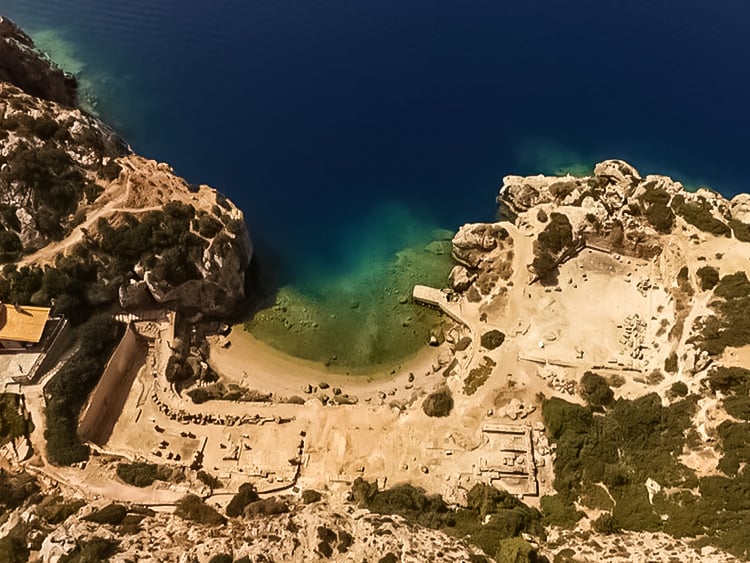
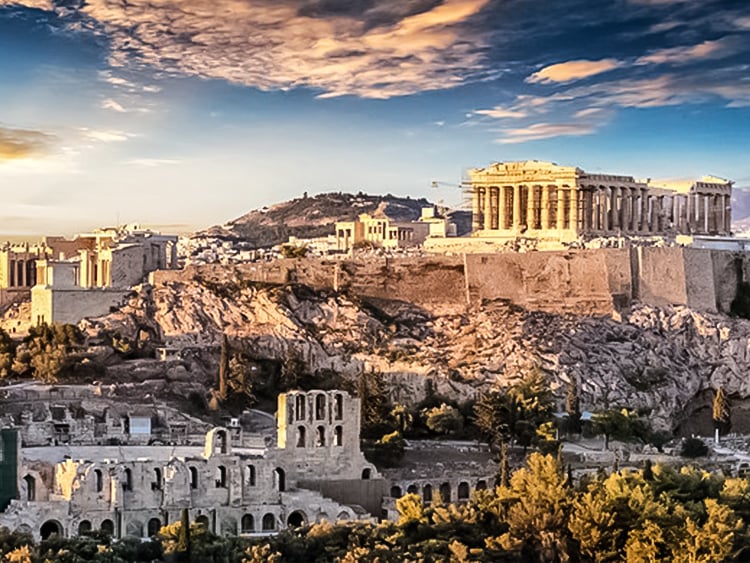

Distance from hotel: 50Km/55mins driving
The Heraion of Perachora is a sanctuary of the goddess Hera situated in a small cove of the Corinthian gulf at the end of the Perachora peninsula. In addition to a temple of Hera of unusual construction and antiquity, the remains of a number of other structures have also been found, including an L-shaped stoa, a large cistern, dining rooms, and a second potential temple. The Sanctuary of Hera at Perachora is 14.2 kilometres (8.8 mi) north-northwest of Corinth and 75.9 kilometres (47.2 mi) west of Athens. Although there is debate between Argos, Megara and Corinth, the sanctuary was probably under the control of Corinth, as it faced the harbors of that powerful city across the Corinthian gulf. Cult activity at the site continued from perhaps the 9th century BCE to 146 BCE, when the Roman general Mummius sacked Corinth during the war with the Achaean League. In the Roman period, domestic structures were built on the site, indicating that the area was no longer a sanctuary. This site is significant for the study of the origins of Greek temple architecture and rural cults.
Distance from hotel: 100Km/90mins driving
Acropolis- a hill that has never rested. Either in its glories or during destructions, the sacred rock and its remarkable structures went down in history reminding us the uppermost level of human creativity. An epigrammatic reference to the successive transitions-uses of the rock, which went down in history as the Sacred rock, would be as follows: first inhabited in the Neolithic period (2500-3000 BC) , a royal residency, the creation of sanctuaries and temples, such as Erechtheion that was the tomb of King Erechtheus, and the destruction by the Persians during the Greco-Persian Wars. During the “Age of Pericles”, the rock would be embellished with the masterpieces of Phidias, Callicrates, Ictinus and many more great artists. The brilliance of the rock was preserved till the first centuries AD. Then, begin the destructions by wars, earthquakes and massive looting, the most known of which was noted between the years 1801-1802, with the depredation of the graven decoration of the Parthenon by Lord Elgin and the removal of sculptures from the Temple of Athena Nike and Erechtheion. On this rock is preserved the architectural and artistic masterpiece, the Temple of Athena Parthenos. Its construction was completed within 8 years (447-438 BC) and was based on proportions that ‘correct’ optical illusions and bring out harmony. Like many other buildings of the era, the Parthenon suffered many transformations during its history: a church of Agia Sofia and then of Panagia (5th century AD), a mosque, a powder storehouse (during the Ottoman Empire), which was the reason for its great destruction suffered by the cannons of Morosini (1687) which bombarded the Sacred Rock during the Turkish occupation. The professor M. Korres and his team have undertaken the restoration of the monument and are carrying out this demanding work with great respect and care. Using all the remaining pieces and complementing what has been lost or broken, they are gradually restoring the temple in a state, in which the exact proportions of its structure will be obvious again. The temple will not become like the glorious one of the 5th century, yet the ruins will stand there reminding us the unnecessary disasters as well as the beauty that can be created by man.
Copyright © wondergreece.gr
Distance from hotel: 86Km/75mins driving
Located on the northeastern side of the Peloponnese and only 2 hours drive from Athens, Epidaurus is among the most important ancient sites of Greece. It owes its prosperity in the ancient times to the Asklepieion, the healing center where patients would come to be healed by god Apollo. As Epidaurus was reputed to be the birthplace of Asclepius the healer, son of Apollo, its sanctuary and healing center was very popular in antiquity. Ill people would come there from all over Greece and Asia Minor to be cured with the god’s help. According to the healing process, all patients would sleep in a large sleeping hall (enkimeterio) and god Apollo would come to their dream. The next day, the patients would narrate their dreams to the priests of the sanctuary, who would later explain it and decide which treatment must be followed to cure the patient. To thank the god for offering his advice, athletic games and other festivities would be organized every four years to his honor. This is why a stadium has been found next to the Asklepieion, where athletic competitions would take place in honor of god Apollo and his son, Asclepius. Also, this is why the famous Ancient Theatre of Epidaurus was constructed, so that performances and ceremonies would take place there as part of the festivities for the gods. The Ancient Theatre of Epidaurus, that amazes visitors with its symmetry and beauty, was designed by Polykleitos the Younger in the 4th century BC. With a capacity to host 15,000 spectators, this theatre is famous for its exceptional acoustics that permits even the spectators of the last row to listen to what actors are saying on the scene. Fame and prosperity followed the sanctuary of Asklepieion throughout the Hellenistic period, but afterward, it was raided many times by the Romans, the Goths and by pirates. However, even with the introduction of Christianity, the healing center continued to work as a Christina center, before it gradually declines along time. In 1988, the ancient site of Epidaurus was declared as a UNESCO world heritage site and today it is visited by millions of people every year.
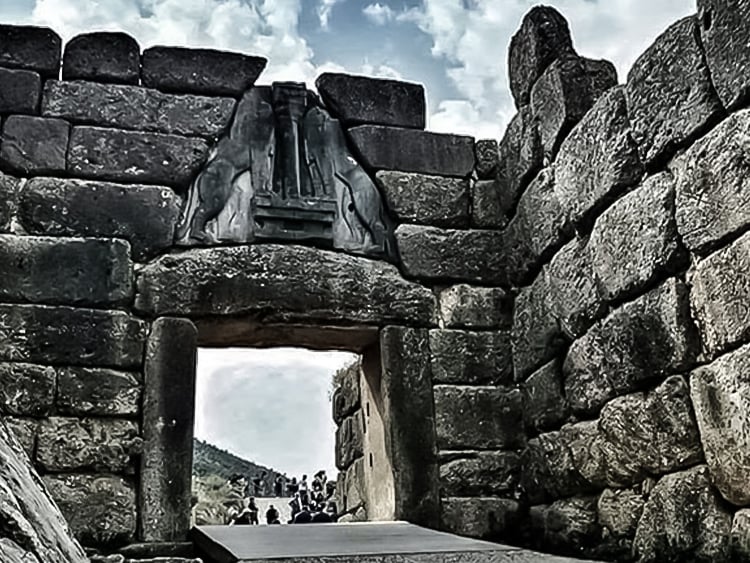


Distance from hotel: 53Km/44mins driving
Located in eastern Peloponnese, the archaeological site of Mycenae is among the most important places in mainland Greece. Even mentioned by the epic poet Homer and the geographer Pausanias, Mycenae was the most powerful town of its days and even gave its name to an entire historical period, the Mycenaean period. Actually, until the 1870s when the amateur archaeologist Heinrich Schliemann excavated the site of Mycenae, many experts did not believe that the town actually existed but thought it was made up by Homer. After the excavations of Mycenae, and also of Troy and Tyrins, Schliemann was named the “father of Mycenaean Archaeology”. The Mycenaean civilization dates from 1,600 BC to 1,100 BC approximately, reaching its peak between 1,400 BC and 1,200 BC. History testifies that the Mycenaeans were great warriors and followed a severe social scale, with the king on top. They did not develop the arts much and there are no recorded facts of extensive trade between Mycenae and other city-states, although Mycenaean pots have been found in the Mediterranean basin, most in southern Italy and even in Egypt. Apart from pots, other objects found on the ancient site of Mycenae are ivory carvings, many golden ornaments, bronze weapons, jewelry and house artifacts, such as cups. Many of these were found in shaft graves, such as the golden mask of Agamemnon, which is believed to be the death mask of King Agamemnon. The citadel of Mycenae was constructed on the slopes of a hill overlooking the valley of Argos. It was protected by Cyclopean walls that are actually high walls made of huge stones. Legend says that men could impossibly carry those stones with the poor technology of the era, so it was Cyclops who built these walls. The entrance to the citadel is known as the Lion Gate, as there are two female lions carved on the stone above the gate. The citadel itself has remains of houses, cisterns, public buildings, storehouses and on top of the town is the Acropolis, the highest spot where the king would also live. In a walking distance from the citadel is the Treasury of Atreus, the best-preserved vaulted tomb in Greece. This tomb was found already looted in the Medieval or Ottoman times, which is why very few objects were found inside upon its excavation. Close to the citadel is also the tomb of Clytemnestra, the legendary wife of Agamemnon. Outside the walls of Mycenae is the tomb of Aegisthus, who organized the assassination of Agamemnon along with his mistress, Clytemnestra. The fact that Aegisthus was buried outside the city walls means that he was unwanted for the town. Next to the citadel of Mycenae is the Archaeological Museum that hosts many valuable items excavated from this site. In 1999, the ancient site of Mycenae had been declared a UNESCO World Heritage Monument.
Distance from hotel: 67Km/55mins driving
Tradition says that the citadel was founded by the prince of Argos, Proetus, who, pursued by his brother, Acrisius, fled to Lycia and returned bringing with him the Cyclops who constructed these enormous walls. The fortification of the hill, completed at the end of the 13th century BC, surrounds the citadel with a total perimeter of approximately 750 m. The impressive walls, built of stones even larger than those of Mycenae, are up to 8 metres thick and 13 m high. They can rightly be regarded as a creation that goes beyond the human scale, as reveals the word “cyclopean” – built by Cyclops, the mythical giants from Lycia. Five kilometers east of the citadel, a unique technical achievement of antiquity has been located. In this area is an enormous embankment, originally lined with boulders at its ends – some boulders can still be seen today – built to divert the rainwater of the Manesis torrent that flowed towards Tiryns and caused floods in the Early Bronze Age. In parallel with the construction of the dam, a diversion channel was opened towards the southwest, which carried the waters south of Profitis Ilias hill into the bed of another torrent (Ramadani). The dam should be dated in the 13th century BC, that is the period of Tiryns’ heyday, and is comparable to the Mycenaeans’ large-scale drainage works in Lake Kopais, Boeotia.
Distance from hotel: 203Km/160mins driving
One of the most notable archeological sites in Greece. During the 10th century BC, Ancient Olympia was the place of worship of Zeus, while the Olympic Games started taking place there every 4 years in 776 BC, which were banned in 394 AC by the Emperor Theodosius I as a pagan event. However, the institution has been revived and, therefore, the ignition of the Olympic flame takes place here, and then travels to each host country. The perambulation of this wondrous archeological site includes not only the facilities where the games took place such as the stadium, the fighting arena, the race track etc., but also the temple dedicated to Hera, Zeus’s temple where the winners were crowned and the workshop of Fidias, who created one of the seven wonders of the known world back then, the Chryselephantine statue of Zeus.
Copyright © wondergreece.gr
